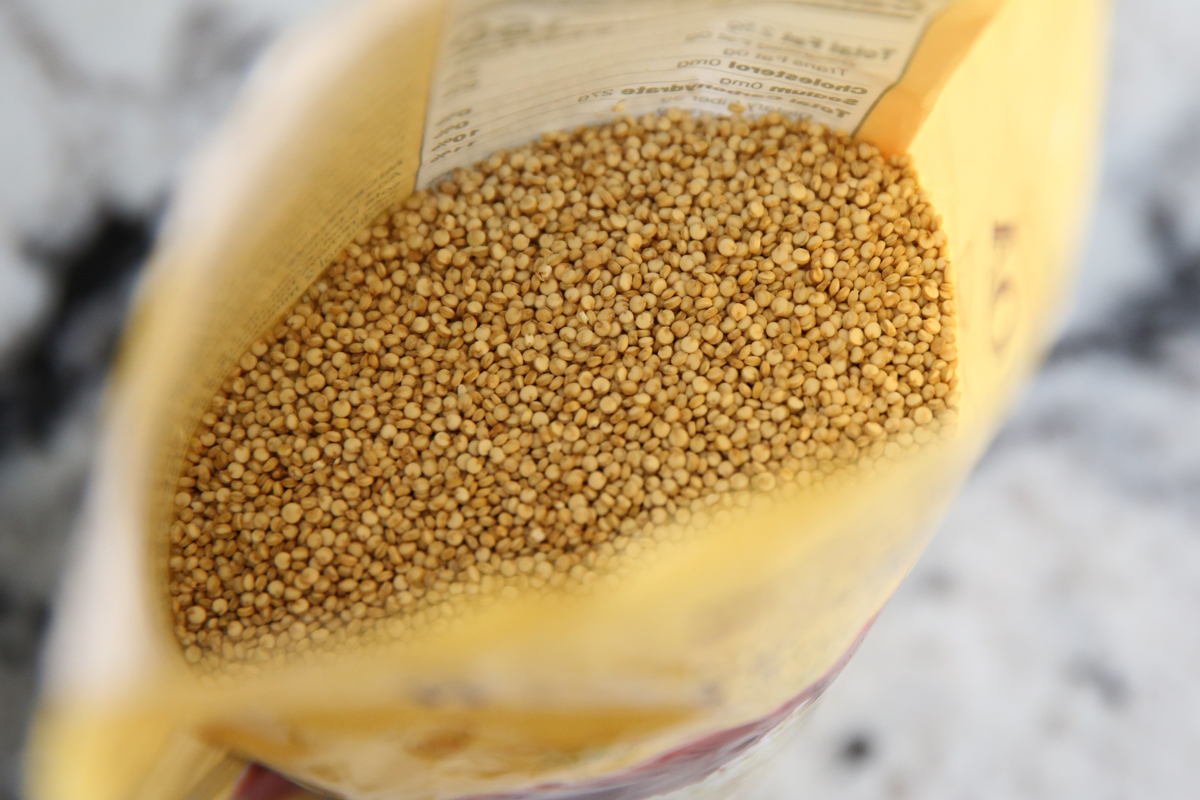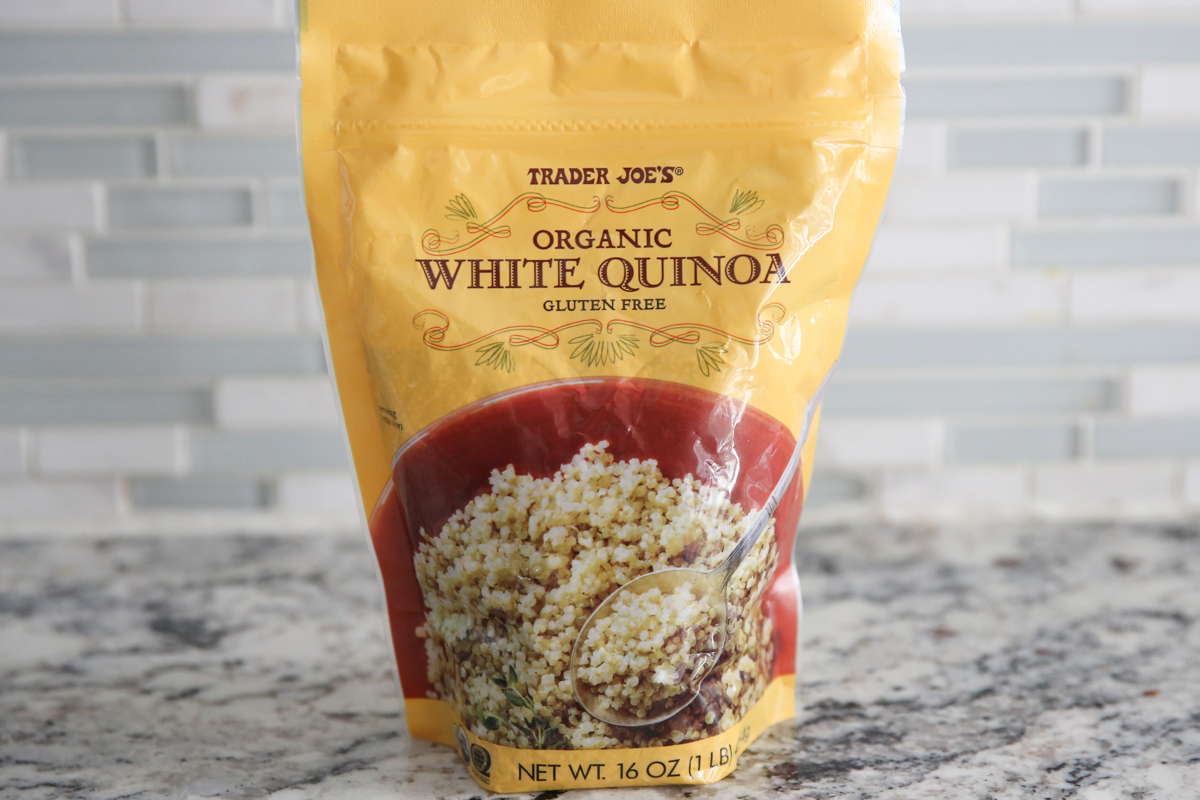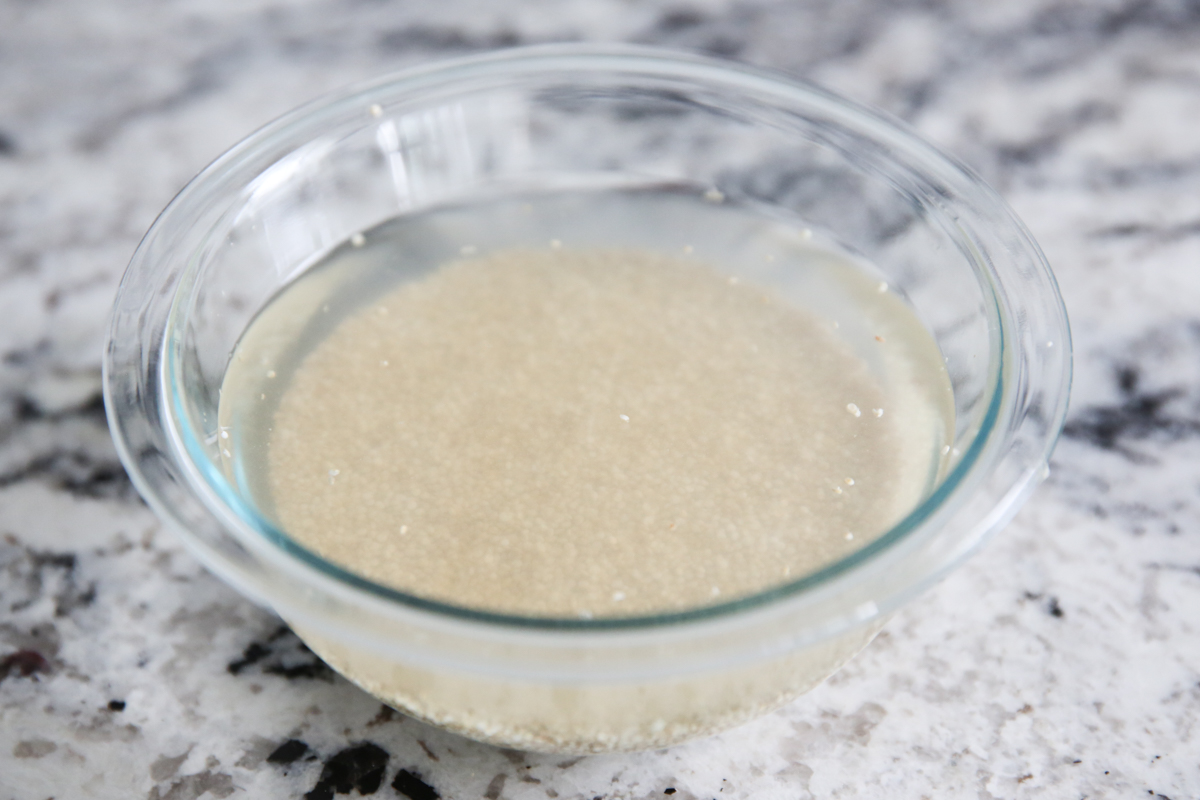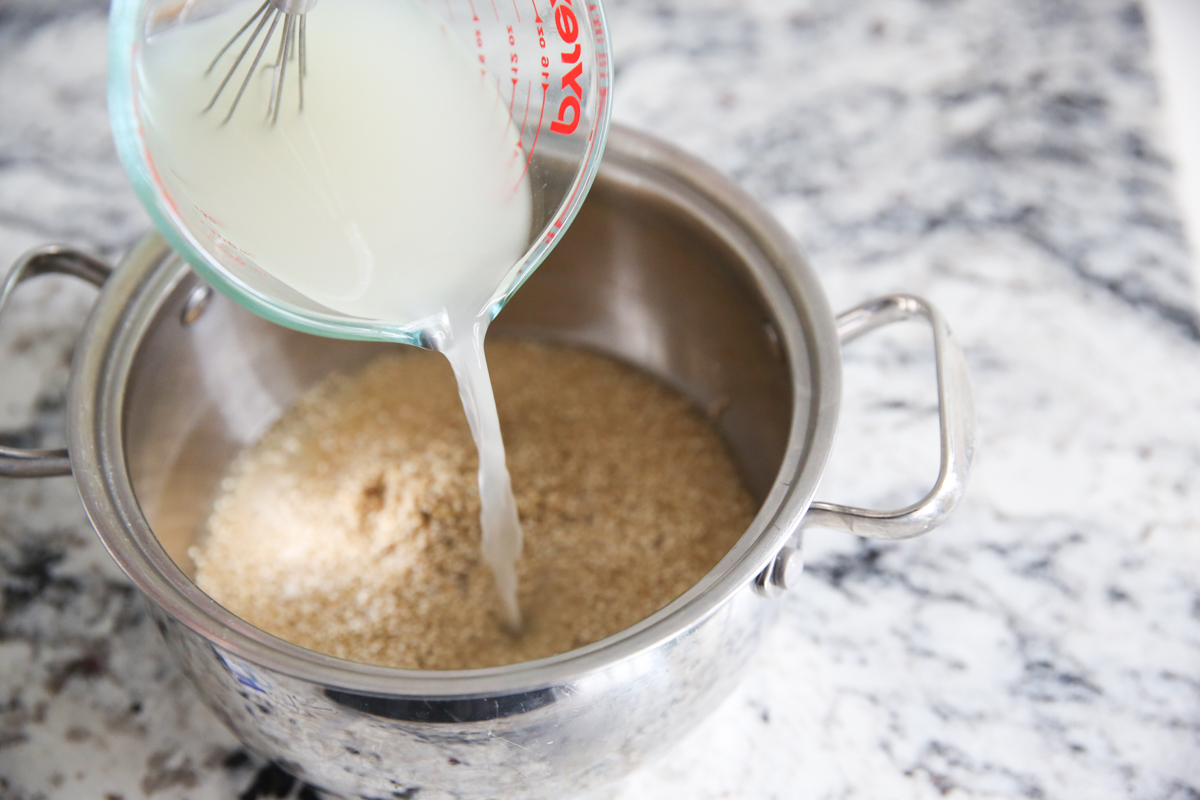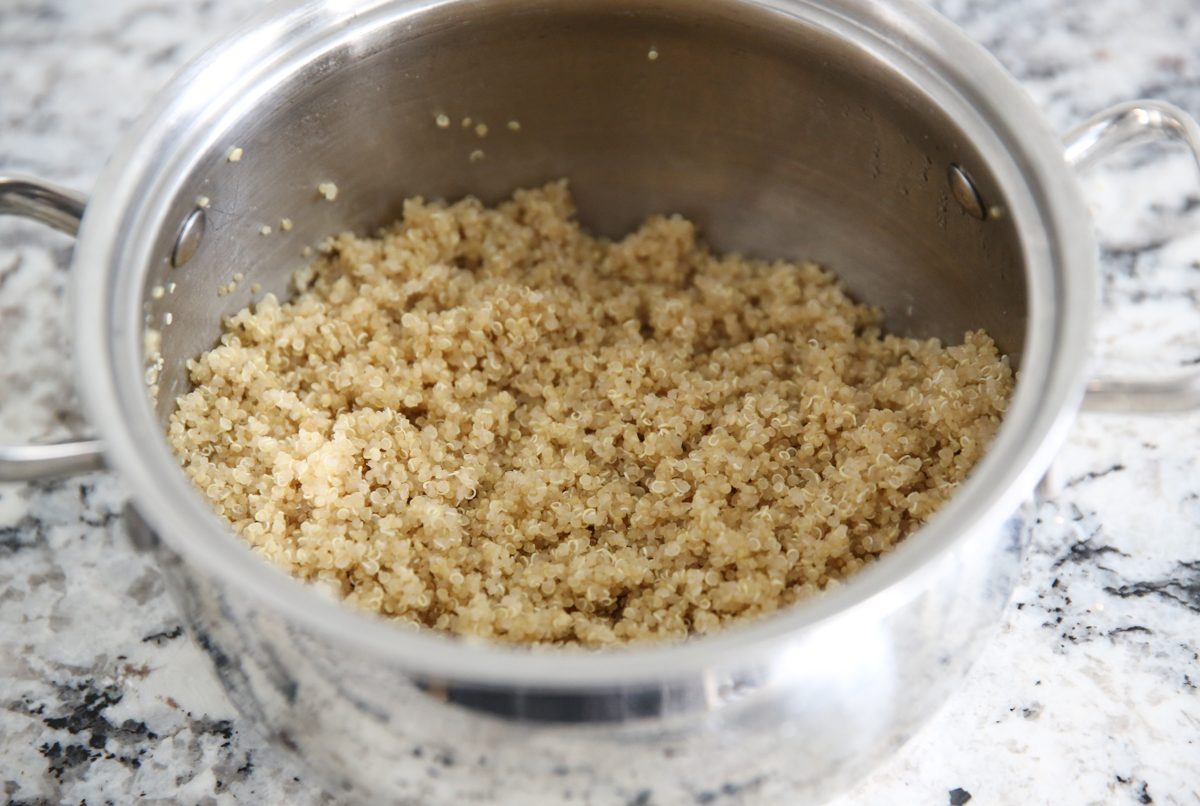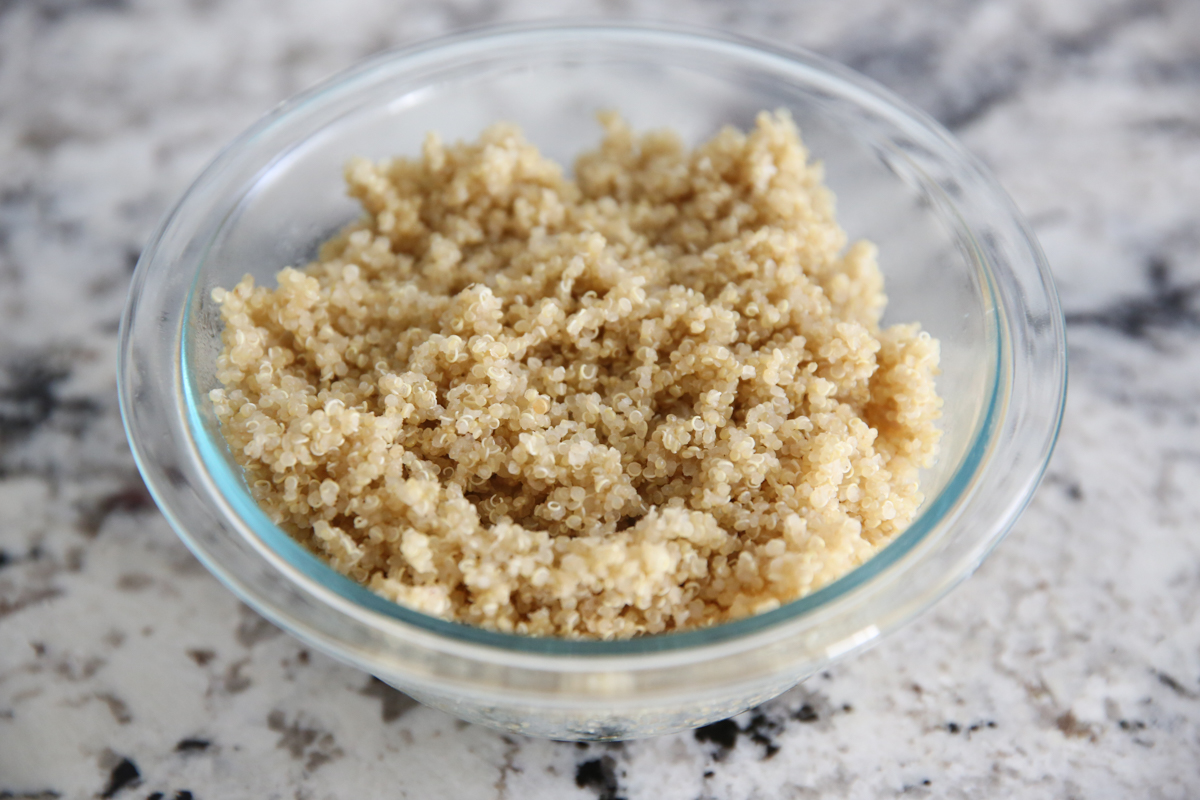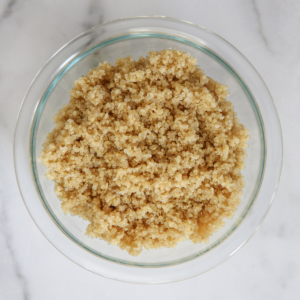5 8 Published Mar 29, 2021, Updated Nov 05, 2024 Spoiler alert: you pronounce it keen-wah! I am a quinoa lover and have been for years. I love making it to use in salads (my easy quinoa salad is the best), as a thicker for soups and even casseroles (you have to try this cheesy broccoli quinoa casserole. It’s such a versatile little seed. Yes, it’s a seed. I know it seems like a grain, but it’s actually a pseudocereal.
Quinoa 101
If you’re new to quinoa, let’s start with the basics. Like I mentioned above, quinoa is technically a seed, but it is prepared similarly to grains like rice and barley. It is a staple in South American cuisine and has gained popularity in North America over the years. In terms of taste, quinoa has a mild, nutty, earthy taste similar to brown rice.
Why is Quinoa So Great?
Quinoa is often considered a superfood and for good reason. Here’s why:
a good source of plant-based protein – one cup has 8 grams, the same amount that is in a cup of whole milk! a complete protein, which means it has all nine essential amino acids including lysine… a rare find when it comes to plant-based foods high in fiber – one cup of cooked quinoa has 5 grams of fiber. There are a ton of health benefits of a fiber-rich diet including healthy digestion, prevention of heart disease, lower cholesterol levels and better controlled blood sugar levels. Fiber also helps to keep you feeling full, which can help with weight loss. rich in vitamins – quinoa is a good source of B vitamins (over 10% of the RDA for vitamins B1, B2 and B6), vitamin E and a variety of antioxidants. rich in minerals – quinoa is a good source of minerals including manganese, phosphorus, copper, folate, iron, magnesium, and zinc. naturally gluten-free, making it great for anyone who is celiac or needing to avoid gluten in their diet.
Learn more about the health benefits of quinoa here.
Which is Healthier: Quinoa vs. Rice
Often times you’ll see quinoa used as a rice substitute so you may be wondering if quinoa is healthier than rice.
It is! Overall, quinoa is a healthier choice than rice, especially white rice which is processed and not considered a whole grain.
While the calories are similar, around 200 per cup for quinoa and rice, 1 cup of quinoa has double the amount of protein and fiber than 1 cup of white rice.
Quinoa also has more micronutrients like iron, manganese, phosphorus, magnesium, zinc and calcium.
When comparing quinoa to brown rice, the two are more comparable because brown rice is a whole grain and still contains some of the powerful nutrients that are lost in the processing of white rice.
Quinoa and brown rice have similar calories, fiber and micronutrients per serving, but quinoa does still have higher amounts of protein and less carbs! So overall, I’d say quinoa is healthier than rice.
White, Red, Black, Sprouted…Which Quinoa Do I Buy?
There was probably a period of time where you could only buy quinoa at health food stores. Not anymore! Quinoa is at most major grocery stores! You can find it in the natural food section or by the other grains. You’ll often find a variety of options from white, red, black, tri-color and sprouted. They’re all cooked the same way and nutritionally they’re very similar. Red quinoa does tend to be higher in antioxidants and sprouted quinoa has less phytic acid, which makes it easier for your body to absorb the nutrients. I’ve personally tried them all, but tend to use regular white quinoa most often because it’s the least expensive and easy to find. It also has the mildest flavor and is fluffier than the colored varieties. Red and black quinoa are a bit chewier, which works well in certain dishes where you want the quinoa to hold its shape, like quinoa salads. It’s also fun to use the red and black varieties when you want to add a pop of color to a dish. My favorite brand of quinoa is Ancient Harvest, mostly because their quinoa comes pre-rinsed, which is a time saver. I’ve used this brand for years!
Do You Have to Rinse Quinoa?
After research and making quinoa with and without rinsing, I’ve decided that rinsing is entirely up to you! The purpose of rinsing the quinoa is to remove its natural coating, called saponin, which can make your cooked quinoa taste bitter or soapy. That said, skipping the rinsing the process won’t hurt you and can definitely save time and annoyance, especially if you don’t have a fine mesh strainer. Just know that unrinsed quinoa will likely result in quinoa with a more earthy, slightly bitter flavor. The rinsing process really isn’t that bad. Just grab a fine mesh strainer, place the dry quinoa in and rinse until the water runs clear. Drain the quinoa and then add it to your pot for cooking.
How to Make Quinoa Taste Better
I’ll be the first to admit that I don’t usually cook quinoa to serve up on its own because it doesn’t taste like much. I use it the same way I use rice… as a base for a flavorful dish that I’m putting on top or incorporated into a recipe where I’m adding more flavor and seasoning along with the cooked quinoa. For this reason, I usually cook my quinoa with water and forego extra seasonings because I know I’ll be adding more flavor when using the quinoa for my meal. That said, if you want to serve cooked quinoa as a side dish there are plenty of ways to amp up the flavor.
Toast the quinoa before cooking – I didn’t include this in my recipe because I rarely toast my quinoa unless a recipe calls for toasting, but it is a good way to bring out the oil and nuttiness of the quinoa, adding a depth of flavor. To toast quinoa simply rinse and drain well, then add the quinoa to your dry pot over medium heat and sauté the quinoa, stirring constantly for about 5 minutes or until the quinoa is aromatic. Then add your water and salt and continue to cook. Cook the quinoa in broth instead of water – you’ll use the same amount, but the flavor of the broth will add a depth of flavor to the cooked quinoa. You can use vegetable broth, chicken, beef or even bone broth. Stir in toppings – once cooked you can stir in a variety of toppings to add flavor. I like adding a drizzle of olive oil, salt, pepper, chopped fresh herbs, lemon juice or a sprinkle of cheese.
How to Cook Quinoa in a Rice Cooker
Using a rice cooker to make quinoa is easy, and if you make a lot of rice (or other grains) a rice cooker is a handy kitchen appliance to have. I use this one from Zojirushi that my sister and brother-in-law gifted us and you can get it for around $199. For a less expensive option, the Aroma 4-cup Digital Rice Cooker is a good choice. It sells for about $30.
When using a rice cooker to make quinoa, use the same ratio of quinoa and water as when cooking on the stovetop: 1 cup quinoa to 1 ¾ cups water. Rinse and drain the quinoa using a fine mesh strainer. Place the quinoa, water, and ¼ teaspoon salt into the rice cooker. Stir, close the lid, and then set the rice cooker to the “white rice” setting. The rice cooker will automatically shut off when the quinoa is done. Let the quinoa sit for a few minutes to absorb any extra moisture, then open the lid, fluff, and serve.
How to Use Quinoa
Once you’ve cooked your quinoa there are SO many ways to use it! I love meal prepping quinoa and using it in a variety of ways throughout the week. Here are some of my favorites:
Breakfast – Start your morning off with a protein-packed quinoa breakfast bowl or this cinnamon quinoa where it’s prepared like oatmeal! I also have a quinoa granola recipe that is insanely delicious. Bowl – I love building bowls with a grain, protein, veggies and a dressing. Here is a quinoa meal prep bowl that I love! Salad – I love adding quinoa to salads for a variety of textures (and extra protein!) This easy quinoa salad is my absolute fave, but I also have countless others including this Southwest quinoa salad, a kale quinoa salad and this amazing roasted broccoli quinoa salad. Soup – Quinoa is a great way to add protein, fiber and bulk to a soup. It also makes soup extra cream (without dairy) if you blend it into your soup! Try my carrot and parsnip soup or this quinoa vegetable soup. Casseroles – Throw quinoa in a casserole for added protein and volume! I’m obsessed with this Mexican quinoa casserole or this cheesy broccoli casserole. Dessert – Yep you can even enjoy quinoa for dessert! It’s delicious in this layered parfait and these quinoa gingersnap cookies are fan-favorite.
More Quinoa Recipes to Try:
Quinoa Tabbouleh Roasted Broccoli Quinoa Salad Chicken Fajita Quinoa Bowls Spring Quinoa Salad Greek Quinoa Salad Quinoa Fried “Rice” with Shrimp Slow Cooker Cheesy Mexican Quinoa Casserole
Photos by Ashley McLaughlin.
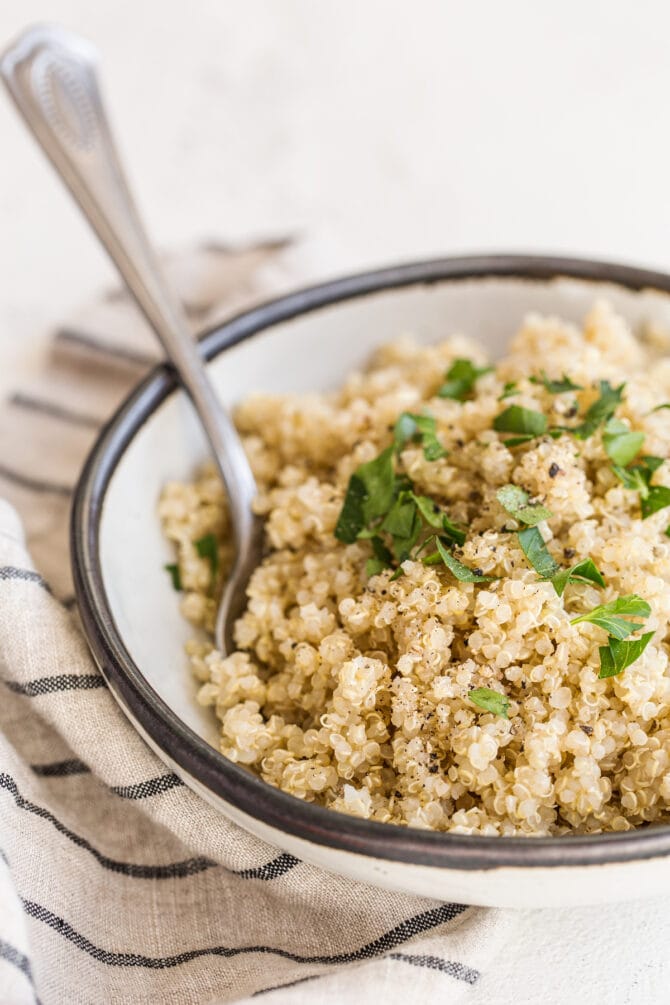
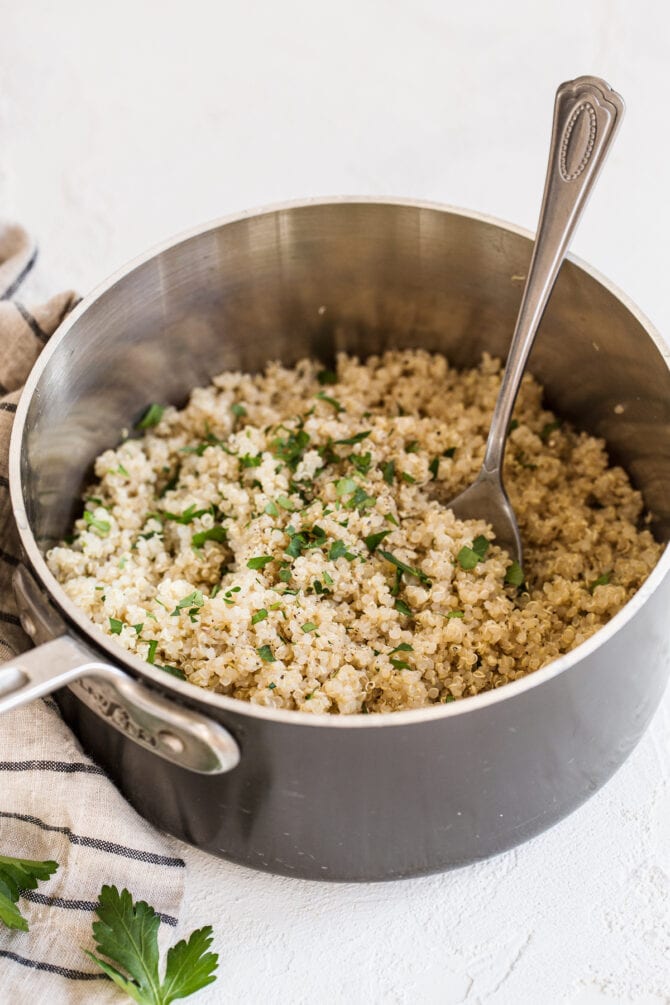
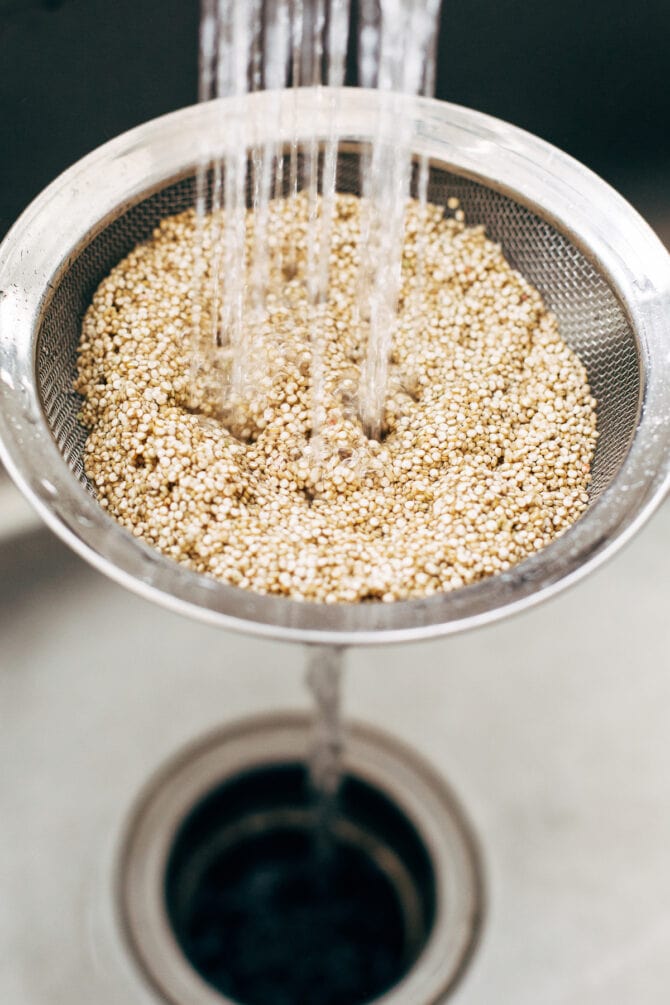
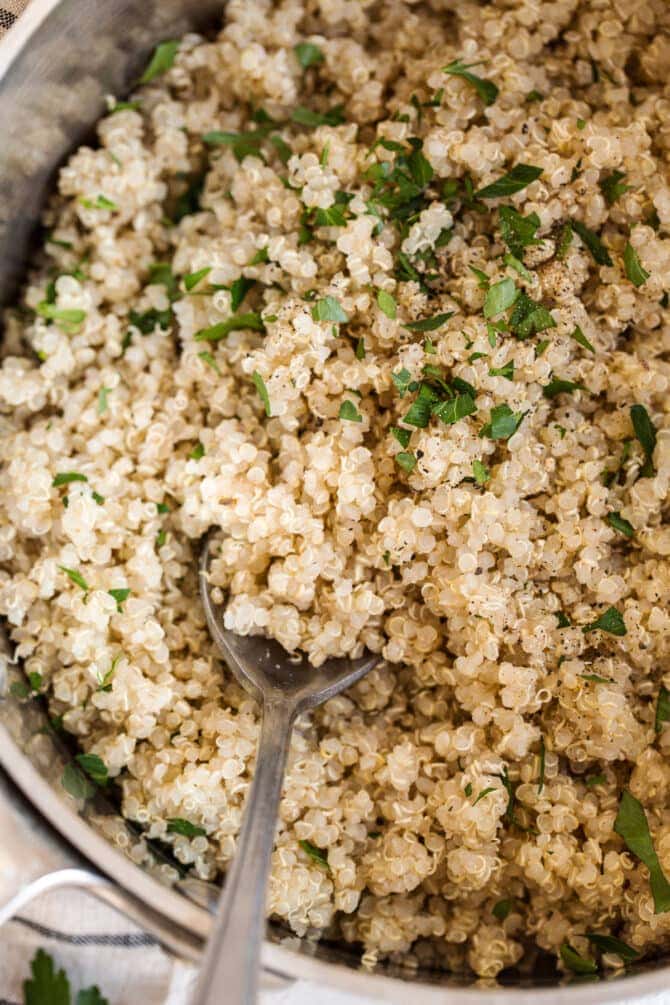
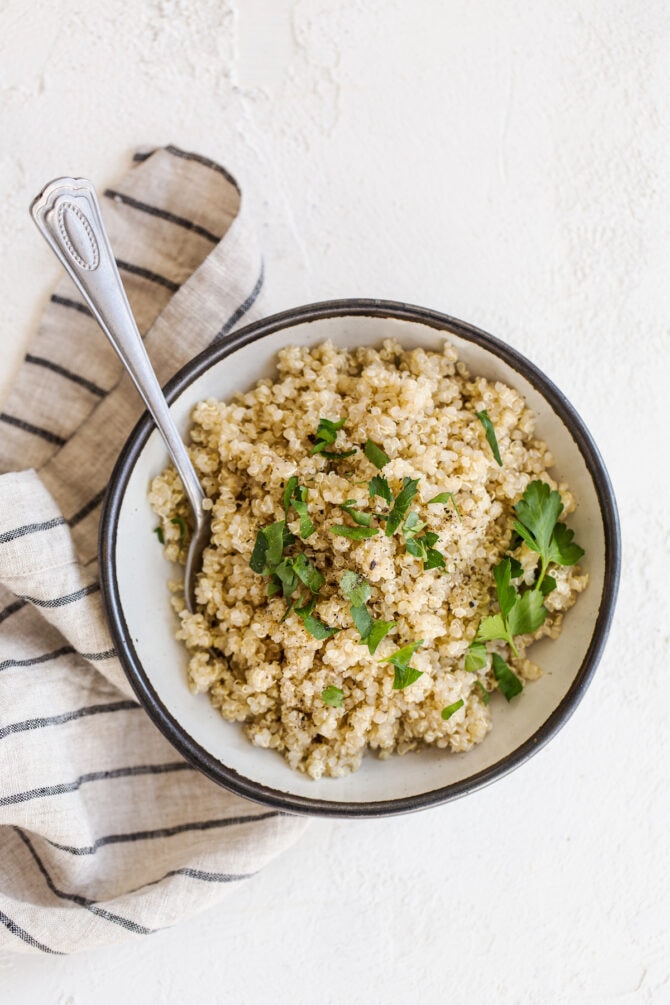
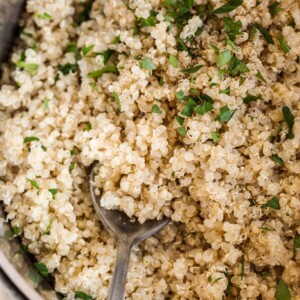
title: “How To Cook Quinoa” ShowToc: true date: “2024-10-19” author: “James Ludkowski”
Are there different colors or varieties of quinoa?
The most common variety of quinoa is white. It has the most mild flavor and also the fluffiest texture. There are also red and black varieties. Both of these tend to have a slightly stronger flavor and a little bit more chew.
What are the health benefits of quinoa?
It has a mild, nutty flavor and it’s very good for you! Quinoa has a higher protein content than any other grain, and it’s complete protein, meaning that it provides 9 essential amino acids. It’s also rich in fiber, and low on the glycemic index. It’s especially great for those who eat gluten free, vegan, and vegetarian diets because it is such a great source of nutrients, including both calcium, iron, and protein.
Where I can I buy quinoa?
As quinoa is becoming more and more popular, it is fairly easy to find it in a normal grocery store. It’s stocked near the dry rice and couscous. Also, check stores that carry grain in bulk. I buy quinoa from a bulk bin where I get a much better price than from a box. You can also find large bags in most Costco stores.
How do I cook quinoa?
It’s cooked much like rice. It can also be cooked in a rice cooker, but I use the stove top method most often.
How to use quinoa
Quinoa can be used in a variety of ways. Try it as a substitute for rice, couscous, or orzo in recipes you already make! Here’s a few to try: Coconut Almond Breakfast QuinoaRoasted Sweet Potato Quinoa SaladBlack Bean and Mango Quinoa Salad
